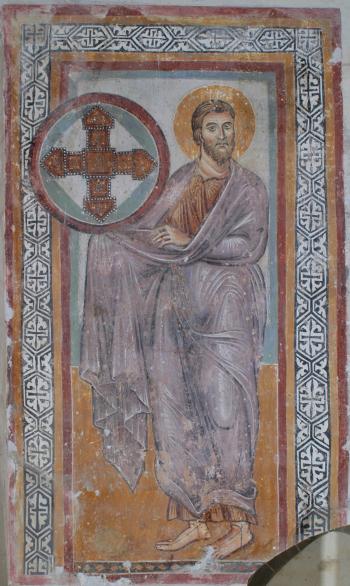Twelve apostles with consecration crosses
San Bevignate Templar Complex

Anonymous
fresco
1280-1283 ca
All around the walls of the church, painted over the previous pictorial decorations of the apse, are the twelve apostles each holding up a large jewelled cross with rounded edges which are known as consecration crosses. An ancient Christian rite involved painting these crosses over the exact spot where the bishop had marked the wall with a cross in holy oil during the consecration of the church. This iconography harks back to the symbolic role of the apostles as ‘pillars’ of the Church and can be compared with coeval French sculpture and paintings.
The twelve larger-than-life-sized polychrome sculpted stone figures representing the twelve Apostles in the Sainte-Chapelle in Paris are dated circa 1240 to 1260; comparable depictions can be found in various seats of the Knights Templar including the frescoes in the Chapelle de la Croix-au-Bost in Saint-Domet, founded in the 13th century by the Knights Hospitaller (commonly known as the Knights of Malta). The San Bevignate apostles date to the 1380s and were the work of a much more refined master-painter or studio than the frescoes in the first phase of decoration. Their production may be linked to the arrival in Perugia in 1283 of Guillaume Charnier, a Templar leader from France who was already an ostiarius for Pope Nicholas III.